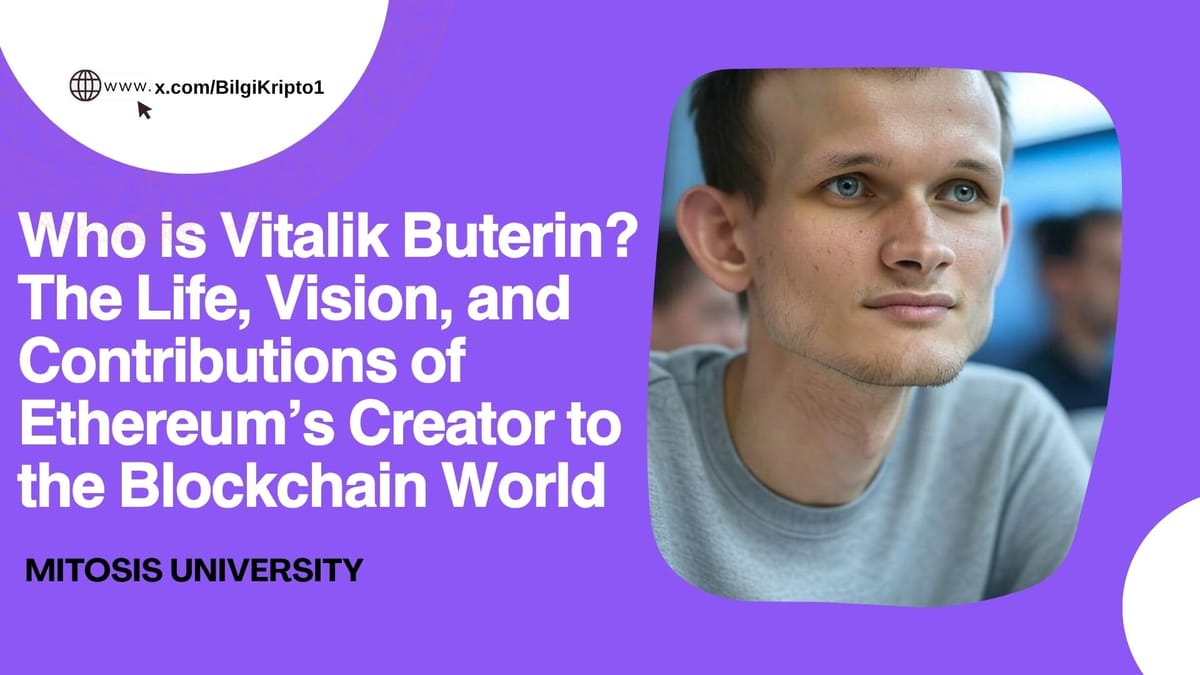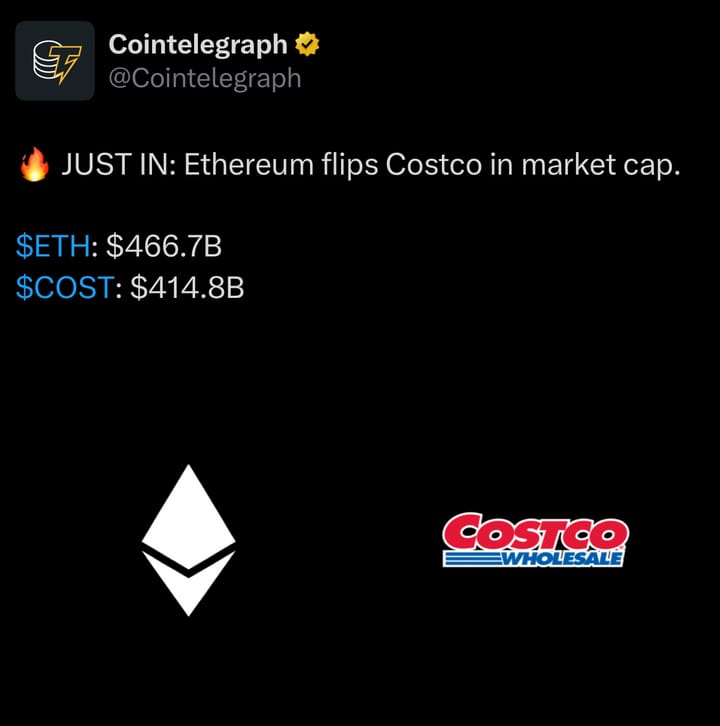Who is Vitalik Buterin? The Life, Vision, and Contributions of Ethereum’s Creator to the Blockchain World

Vitalik Buterin is one of the most well-known figures in the cryptocurrency ecosystem, having played a critical role in the development of blockchain technology. A Russian-born Canadian computer programmer, he is particularly recognized as the creator of Ethereum. His vision transformed blockchain from being merely a network for digital currency transfers into a platform capable of supporting decentralized applications and smart contracts, greatly expanding its use cases.
Childhood and Education
Vitalik Buterin was born in 1994 in Kolomna, Russia, and moved to Canada with his family at the age of six. From an early age, he stood out for his mathematical thinking and problem-solving skills and was placed in special programs for gifted students.
His interest in computers began early. He taught himself to code and quickly grasped complex software concepts. While attending the University of Waterloo, he took advanced computer science courses and had the opportunity to work with renowned cryptography expert Ian Goldberg.
The World of Warcraft Experience and the Idea of Decentralization
During his teenage years, Vitalik was an avid player of the popular online game World of Warcraft. When a game update removed one of his favorite features, he realized that a central authority could make decisions that negatively affected users without their consent. This experience created early awareness about the risks of centralized systems and later shaped the core philosophy of Ethereum.
First Encounter with Bitcoin and Early Work
In 2011, Vitalik discovered Bitcoin. Initially uncertain about its value, he quickly recognized the potential of its decentralized structure. The question “Is it really possible to have a financial system that operates without banks or governments?” sparked his curiosity.
Eager to learn more, Vitalik began writing about Bitcoin and became an active member of the crypto community. He later co-founded Bitcoin Magazine, one of the first major publications dedicated to cryptocurrency news and analysis.
Through his writings and community involvement, Vitalik gained both technical expertise and a broader philosophical perspective on blockchain technology. While he appreciated Bitcoin’s ability to enable peer-to-peer transactions without intermediaries, he also recognized its limitations particularly its restricted scripting language, which allowed only basic operations. This led him to imagine a more flexible blockchain capable of supporting general-purpose programming.

The Birth of Ethereum
Ethereum Whitepaper and Core Concept
At the age of 19, in 2013, Vitalik published the Ethereum whitepaper. In this document, he described the idea of building a blockchain that would function as a global, decentralized computer rather than simply a payment network.
Ethereum’s major innovation was its Turing-complete programming language, which allowed developers to write arbitrary logic in the form of smart contracts. This made it possible to create decentralized applications (DApps) that could operate without any central authority.
Launch and Early Success
In 2015, Ethereum was officially launched following a successful initial coin offering (ICO) that raised about $18 million worth of ETH. Other key co-founders included Gavin Wood, Joseph Lubin, and Charles Hoskinson, who all played important roles in building Ethereum’s early infrastructure.
To support ongoing development, the Ethereum Foundation was established in Switzerland as a non-profit organization. It helped coordinate open-source contributions and funded the platform’s growth.
Ethereum quickly attracted developers interested in building innovative solutions. Over time, its ecosystem expanded, becoming the foundation for new sectors such as DeFi (decentralized finance), NFTs (non-fungible tokens), and DAOs (decentralized autonomous organizations). Vitalik’s vision shifted blockchain’s focus from digital currency to a much wider range of decentralized innovations.
Key Milestones in Ethereum’s History
The DAO Hack and Community Split (2016)
One of the earliest major crises in Ethereum’s history was the DAO hack in 2016. “The DAO,” a decentralized venture fund built on Ethereum, had raised over $150 million worth of ETH during its crowdfunding phase. However, a vulnerability in its smart contract code was exploited, and approximately 3.6 million ETH (worth about $50 million at the time) was drained into a subsidiary DAO.
Vitalik and the Ethereum community proposed several solutions, including a soft fork to blacklist the stolen funds. Ultimately, after intense debate, the community decided to implement a hard fork to return the stolen ETH to the original DAO investors. This decision led to a split:
- Ethereum (ETH): The chain that implemented the fund recovery.
- Ethereum Classic (ETC): The original chain that rejected the fork to preserve immutability.
This event sparked a major debate about governance in decentralized networks and challenged the idea that “code is law.” Looking back, Vitalik stated that the DAO incident revealed that code alone is not always sufficient human judgment and coordination can be equally important.
The Merge: Transition to Proof of Stake (2022)
Ethereum initially launched using a Proof of Work (PoW) consensus model, similar to Bitcoin. However, transitioning to a more scalable and energy-efficient Proof of Stake (PoS) system was always part of its long-term roadmap.
Vitalik actively contributed to shaping this transition. He co-authored technical specifications and participated in discussions on validator design, network security, and upgrade planning. Through blog posts, talks, and community engagement, he helped explain the purpose and impact of this shift to a broader audience.
After years of development, testing, and phased upgrades, Ethereum successfully completed The Merge on September 15, 2022. This milestone officially moved Ethereum to PoS, reducing its energy consumption by over 99%.

Vitalik Buterin’s Leadership Style and Public Role
Vitalik remains one of the most influential voices in the Ethereum ecosystem. While he continues to guide protocol development by reviewing Ethereum Improvement Proposals (EIPs) and publishing research, his role has evolved over time.
In April 2025, the Ethereum Foundation announced that Vitalik would gradually step back from daily coordination and crisis management to focus more on long-term research and innovation. This shift allowed him to return to exploratory work while enabling other key contributors to handle operational responsibilities.
Beyond technical contributions, Vitalik is known for his thoughtful writings and public commentary. His blog posts and social media discussions spark meaningful debates not only about Ethereum’s future but also about the broader evolution of digital infrastructure and decentralized systems.
Vitalik is also active in philanthropy. Over the years, he has donated millions of dollars to causes such as COVID-19 relief efforts, anti-aging research, and open-source development initiatives.
Criticism and Controversies
As both the public face and a key contributor to Ethereum, Vitalik’s decisions and influence have often been scrutinized.
A common concern is the extent of his influence. While Ethereum is designed to be decentralized, some argue that the project relies too heavily on Vitalik’s guidance. Although he does not control the network, his ideas can affect everything from protocol design to community sentiment. Vitalik himself has acknowledged this and has deliberately stepped back at times to encourage others to lead.
His willingness to explore experimental ideas, such as Soulbound Tokens (SBTs) and public goods funding, has also drawn mixed reactions. While many admire his forward-thinking vision, others worry that Ethereum risks losing focus by pursuing too many initiatives simultaneously.
Nevertheless, Vitalik is known for engaging with critics in good faith. He rarely ignores tough questions and often uses them as opportunities for personal growth and for improving the Ethereum ecosystem.
Conclusion
Vitalik Buterin is not only the creator of Ethereum but also a visionary who has significantly shaped the evolution of blockchain technology. From technical innovations to public discourse, his contributions have influenced how decentralized systems are built and understood



Comments ()